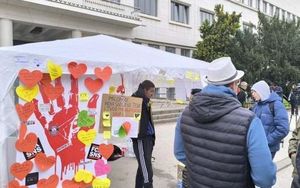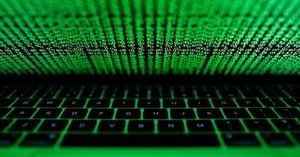At the heart of the American legal system lies the principle that laws should be applied fairly, transparently, and with reasoned explanation. Yet, as of September 16, 2025, that core tenet faces mounting scrutiny following a series of controversial Supreme Court decisions and vocal warnings from both lawmakers and legal experts. The latest flashpoint: a ruling earlier this month that, according to critics, not only undermines civil rights but also signals a dramatic shift in how justice is administered—especially for minority communities in California.
During the biannual meeting of the Judicial Conference, one Democratic politician—who serves on the House Judiciary Committee and holds a law degree from Texas Southern University Thurgood Marshall School of Law—didn’t mince words when addressing Chief Justice John Roberts. The lawmaker declared that the rule of law “is at a Category 6 code red, six alarm fire” due to what he described as the Supreme Court’s reckless use of the shadow docket during the Trump II administration. The urgency of his warning reflected a broader anxiety now echoing through legal circles and communities alike.
This alarm comes on the heels of a Supreme Court order that has drawn fierce condemnation. Earlier this month, the Court suspended a lower court’s ruling that had blocked Immigration and Customs Enforcement (ICE) from conducting “roving patrols” in Los Angeles. The decision, which arrived as an emergency order on the so-called shadow docket, did not include a detailed explanation—a pattern that has become increasingly common in recent years. According to Slate, this lack of transparency has left experts and affected communities deeply unsettled.
Justice Brett Kavanaugh’s concurrence in the ruling has been singled out for particular criticism. Legal analysts argue that his opinion effectively gives federal officers license to engage in overt racial and ethnic profiling during ICE raids. As UCLA Center for Immigration Law and Policy director Ahilan Arulanantham told Slate’s Dahlia Lithwick, “It’s hard not to imagine that this order and this concurrence is the Supreme Court effectively greenlighting racial profiling as part of the basis for reasonable suspicion.”
The implications are far-reaching. The Court’s emergency order, issued without detailed reasoning, means that federal officers can now stop individuals based solely on their appearance, language, or profession. For many, this marks a dramatic erosion of established civil rights protections. Lithwick herself noted that “it’s hard to imagine a world in which these roving ICE officers are not now substantially more comfortable saying, ‘We’re just using race and language and where you’re standing as the basis for this stop.’”
What is the shadow docket, and why does it matter so much? Traditionally, the Supreme Court issues opinions after full briefing and oral argument, providing the public with a clear understanding of the Court’s reasoning. But the shadow docket refers to the Court’s practice of making decisions—often on urgent matters—without such transparency or explanation. Critics argue that this undermines the legitimacy of the Court’s rulings and leaves lower courts, lawyers, and citizens guessing at the law’s meaning. As Arulanantham put it bluntly, “This is why I strongly believe that the shadow docket is not law. Law is based on reasons, and you have to give reasons.”
He continued, “It’s hard for lawyers to accept this, but we have to accept that we’re now living in a regime which is literally lawless, in the sense that we’re getting these edicts like a king handed down from the Supreme Court, that allow the Trump administration to do what it wants in these cases without law.” These are not idle words. The sense of a growing divide within the American legal system is palpable, especially in regions like Southern California, where the impact of these rulings is felt most acutely.
According to Arulanantham, the ruling “extends the prerogative state to people of Hispanic appearance or Latino appearance and who are speaking Spanish, whatever that means. It certainly encompasses me if I’m dressed the wrong way and going to play soccer as I do in parks in Los Angeles, even though I’m not in any way Latino in heritage.” He estimated that “more than half the people in the Southern California region now…are subject to this different regime, that’s not one based on the normative rules that apply to others.”
This notion—that America is splitting into two parallel legal realities—has gained traction among legal scholars. On one side is the normative state, where constitutional rights are respected and due process prevails. On the other is the prerogative state, where executive power operates unchecked, and individuals—particularly those who look or sound a certain way—are subject to arbitrary enforcement. “Kavanaugh’s concurrence is obviously contrary to the preexisting doctrine in this area in so many different ways,” Arulanantham remarked. “You have to guess, because this is not a law-based regime we’re living under in this context now.”
For communities in Los Angeles and beyond, the practical consequences are immediate and unsettling. The prospect of being stopped by federal agents based on racial or ethnic appearance, language, or even profession is no longer hypothetical. The chilling effect on daily life—whether going to work, school, or simply playing soccer in a public park—cannot be overstated. Many residents now find themselves navigating an environment where the rules that once promised protection and fairness suddenly seem to have vanished.
It’s not just local communities who are worried. Nationally, the debate over the Supreme Court’s use of the shadow docket has reached a fever pitch. Lawmakers, legal experts, and advocacy groups are demanding greater transparency and accountability from the nation’s highest court. The warning delivered to Chief Justice Roberts at the Judicial Conference encapsulates this broader concern: that the very foundation of the rule of law is at risk when fundamental decisions are rendered without explanation or regard for precedent.
Yet, the Supreme Court’s defenders argue that the shadow docket serves an important function, allowing the Court to respond quickly to urgent matters. They point out that emergency orders are sometimes necessary to prevent irreparable harm or to maintain stability while full cases are considered. But critics counter that speed should not come at the expense of clarity, fairness, or the Constitution itself.
As the debate intensifies, one thing is clear: the stakes could hardly be higher. For millions of Americans—especially those in immigrant and minority communities—the line between protection and vulnerability has never felt thinner. The legal landscape is shifting, and with it, the very meaning of justice in the United States.
Whether the Supreme Court will heed the warnings and restore greater transparency and restraint to its emergency rulings remains to be seen. For now, the sense of urgency voiced at the Judicial Conference and in legal forums across the country serves as a stark reminder of just how fragile the rule of law can be when the nation’s highest court operates in the shadows.



